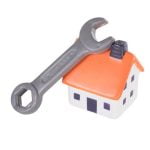Have you ever wondered if being situated at the end of a street can improve the appeal and value of a home? This blog post will explore the significance of a home’s location at the end of a street and its potential impact on various aspects such as traffic, privacy, property value, and community dynamics.
Whether you are considering buying a new home or looking to make improvements to your current one, understanding the benefits of being on the end of a street can provide valuable insight into making informed decisions about residential properties.
Being located at the end of a street may have several advantages that contribute to the overall desirability of a home. From reduced traffic and noise to increased privacy and security, homes at this prime location often offer unique features that set them apart from others in the neighborhood. Additionally, larger yard spaces, limited through traffic, better views, and potential for increased property value are factors that homeowners may want to consider when evaluating their residential options.
In this blog post, we will delve into these different aspects to help you gain a deeper understanding of how being on the end of a street can potentially improve a home. Whether it’s for personal enjoyment or for future resale value considerations, exploring these factors can provide valuable insights into making informed real estate decisions.
Let’s take a closer look at how living at the end of a street can impact various aspects of homeownership and property ownership.
Proximity to Traffic
Living at the end of a street can have many benefits, including reduced traffic and noise. Here are a few reasons why being at the end of a street may improve the appeal of a home:
- Reduced Traffic: One of the main advantages of living at the end of a street is that there is typically less through traffic. This can create a quieter and safer environment for homeowners and their families. With fewer cars passing by, there is also a lower risk of accidents, making it an attractive feature for those with children or pets.
- Noise Reduction: Homes located at the end of a street generally experience less noise from passing vehicles. This can create a more peaceful and serene living environment, especially in urban areas where traffic can be constant. The reduction in noise pollution can make these homes more appealing to buyers seeking tranquility.
- Improved Air Quality: Reduced traffic at the end of a street may also lead to better air quality, as there are fewer emissions from idling vehicles or continuous exhaust fumes. This can be particularly beneficial for residents with respiratory issues or those who simply prioritize clean air.
Privacy and Security
Reduced Through Traffic
Homes at the end of a street often experience less through traffic, making the neighborhood quieter and safer. With fewer cars passing by, residents can enjoy a more peaceful environment and have increased security for their properties.
Limited Access
Being situated at the end of a street means that there is limited vehicular access to the property, reducing the number of strangers or non-residents passing by. This limited access can contribute to a sense of safety and privacy for homeowners and their families.
Desirable Feature
For potential buyers, the idea of increased privacy and security is an attractive feature when considering a home located at the end of a street. The perception of a more secure and secluded living environment may be appealing to those looking for a tranquil place to call home.
Increased Property Value
The privacy and security benefits associated with being on the end of a street can potentially enhance the value of the property. Homebuyers are often willing to pay more for homes that offer added privacy and security features, making these properties more desirable in the real estate market.
Larger Yard Space
Homes situated at the end of a street often offer larger yard spaces compared to those located in the middle of a block. This additional yard space provides homeowners with more room for outdoor activities and entertaining, making it an attractive feature for potential buyers. According to real estate experts, having a larger yard space can significantly increase a home’s appeal and value.
In addition to providing more room for outdoor activities, having a larger yard space also offers homeowners the opportunity to create their own private oasis. Whether it’s adding a garden, building a play area for children, or installing a pool or outdoor kitchen, the extra space at the end of a street allows for more creativity and personalization when it comes to landscaping and backyard design.
According to data from the National Association of Realtors, homes with larger yard spaces sell for higher prices compared to those with smaller yards. The added outdoor space not only enhances the quality of life for homeowners but also has a positive impact on property value. In fact, some studies have shown that homes with larger yards can command up to 10% more in terms of selling price than comparable properties with smaller outdoor spaces.
| Larger Yard Space Benefits | Impact on Home Value |
|---|---|
| More room for outdoor activities and entertaining | Potential increase in property value by up to 10% |
| Opportunity for personalized landscaping and design | Attractive feature for potential buyers |
Limited Through Traffic
Living at the end of a street comes with many benefits, one of which is limited through traffic. Here are some potential benefits of reduced through traffic for homeowners:
- Safer Environment: One significant advantage of living at the end of a street is the reduced through traffic, which can result in a safer environment for families and pets. With fewer cars passing by, there is less risk of accidents and potential harm to children and animals playing in the vicinity.
- Peace and Quiet: Limited through traffic also means less noise pollution from vehicles. This can create a more peaceful and serene atmosphere within the home, allowing residents to enjoy a quieter and more tranquil living space.
- Enhanced Sense of Community: Reduced through traffic can contribute to a greater sense of community among neighbors. With fewer cars passing through, there may be more opportunities for residents to interact with each other, whether it’s through impromptu conversations on the street or neighborhood gatherings without the disruption of constant traffic flow.
Overall, living at the end of a street offers numerous benefits related to limited through traffic, creating a safer and quieter environment while promoting stronger community ties among neighbors.
Potential for Better Views
Homes located at the end of a street have the potential for better views, whether it be of natural surroundings or cityscapes. The positioning of these homes often means that they are not obstructed by neighboring properties, allowing for unobstructed and picturesque views. This can be a significant factor for homebuyers who value scenic surroundings and aesthetics.
In addition to the unobstructed views, homes at the end of a street may also offer more privacy and seclusion, further enhancing the overall appeal of the property. With fewer neighboring homes in close proximity, residents can enjoy a heightened sense of tranquility and escape from the hustle and bustle of everyday life. This can be especially attractive for those seeking a peaceful and serene living environment.
Furthermore, better views from homes at the end of a street can contribute to an enhanced living experience. Whether it’s overlooking lush greenery, pristine landscapes, or urban skylines, these views can elevate the ambiance of the home and create a more enjoyable living space for residents. Additionally, studies have shown that being surrounded by pleasing natural or urban vistas can have a positive impact on mental well-being, making these homes even more desirable for potential buyers.
Property Value
When it comes to the value of a property, location is always a key factor to consider. Homes situated at the end of a street often have unique characteristics that can positively impact their property value. Whether it’s due to reduced traffic, increased privacy, or larger yard space, these homes can offer attractive features that contribute to their overall appeal in the real estate market.
Reduced Traffic and Noise
One of the potential benefits of being at the end of a street is a significant reduction in traffic and noise. This can create a more peaceful and serene living environment, which can be highly desirable for homebuyers. The limited through-traffic also contributes to a safer and quieter neighborhood, making it an appealing option for those looking for a calmer residential setting.
Privacy and Security
Homes located at the end of a street often benefit from increased privacy and security. With fewer neighbors driving or walking by, residents may feel more secluded and less exposed to outside activity. This sense of seclusion can be an enticing feature for homeowners who prioritize privacy and security in their living spaces.
Impact on Property Value
The unique features associated with homes at the end of a street can have a positive impact on their property value. The combination of reduced traffic, increased privacy, larger yard space, and potentially better views all contribute to the desirability of these properties. As a result, these homes may command higher prices in the real estate market compared to properties located on busier streets or within more densely populated areas.
Ultimately, being situated at the end of a street can indeed improve home values, offering attractive benefits that cater to various lifestyle preferences. From tranquility and privacy to potential financial gains, these factors make homes at the end of a street an appealing option for many prospective buyers.
Community and Neighborhood Considerations
In conclusion, the location of a home at the end of a street can have various benefits that can ultimately improve the overall appeal and desirability of the property. The reduced proximity to traffic and noise, increased privacy and security, larger yard space, limited through traffic, potential for better views, and potential impact on property value are all factors that play into the attractiveness of homes situated at the end of a street.
Additionally, the sense of community and neighborly relationships can also be positively influenced by this unique location.
When considering the impact on community and neighborly relationships, being at the end of a street can create a more intimate environment among neighbors. The reduced through traffic often means that those living in these homes have more opportunities to interact with each other, whether it be through impromptu gatherings or simply spending time outdoors without constant vehicle traffic passing by.
This sense of close-knit community can be a significant draw for those looking for not just a house, but a true neighborhood to call home.
Ultimately, while there are certainly advantages to being located at the end of a street – such as increased privacy, security, and potentially better views – it’s important to remember that every homeowner’s preference will vary. Some may prioritize proximity to amenities or accessibility over the benefits that come with this unique location.
However, for those who value peace and quiet as well as a strong sense of community within their neighborhood, choosing a home at the end of a street may very well improve their overall living experience.
Frequently Asked Questions
What Are the Benefits of Living on a Dead-End Street?
Living on a dead-end street can offer several benefits. One of the main advantages is the reduced traffic flow, which can create a quieter and safer environment for residents. Additionally, dead-end streets often have less through-traffic, making them more peaceful and private.
Is Living in a Dead-End Street Good?
For some people, living in a dead-end street can be advantageous. The reduced traffic and slower pace can create a sense of community among neighbors. Furthermore, it can provide a safer environment for children to play and for families to enjoy outdoor activities without the worry of passing vehicles.
Are Houses on Dead End Streets Safer?
Houses on dead-end streets are generally considered safer due to the limited traffic flow. With fewer cars passing through, there is less risk of accidents or speeding vehicles. This can make it an ideal location for families with small children or individuals seeking a quieter living environment with minimal traffic-related safety concerns.

I’m thrilled to have you here as a part of the Remodeling Top community. This is where my journey as an architect and remodeling enthusiast intersects with your passion for transforming houses into dream homes.





